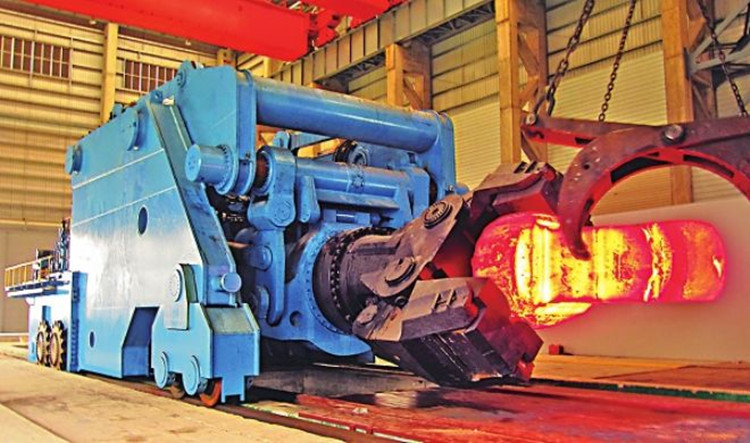- tyler@kirail.com
- +86 15603721115
In the production of large forgings, the upsetting process (also known as rolling head deformation) plays a vital role in the overall quality of the finished product. The correct upsetting process parameters can ensure that the billet obtains a higher forging ratio and makes the carbide distribution in the alloy steel more uniform. In addition, the upsetting process can improve the transverse mechanical properties of large forgings and reduce anisotropy.
1. Challenges faced by large pancake and wide plate forgings
In the upsetting process of large pancake forgings and wide plate forgings, large head deformation is mainly involved. The main problem in this field is that the ultrasonic flaw detection rate is high due to internal transverse cracks and lamellar defects. Unfortunately, the current process theory cannot fully explain these problems. Since the 1990s, Chinese scholars have conducted extensive research on the head theory and deeply analyzed the main deformation zone and passive deformation zone.
2. Theoretical progress of upsetting process
These research results have promoted the development of tensile stress theory based on rigid-plastic mechanics model and shear stress theory based on hydrostatic stress mechanics model. In addition, we have carried out a large number of qualitative physical simulation experiments, which provide valuable insights into the internal stress state of the workpiece. In addition, we have also used analytical tools such as generalized slip lines and mechanical block methods to verify the theory.

3. Improvement of internal stress distribution and tapered plate rolling
The research results clarify the distribution law of internal stress of ordinary flat cylinders and lay the foundation for the introduction of a new process for tapered plate rolling. The establishment of a rigid-plastic mechanical model has significantly improved the upsetting process, reduced forging defects, and improved the quality of large forgings.
4. Factors to consider when selecting upsetting process parameters
When selecting appropriate upsetting process parameters, multiple factors must be considered to ensure the best results. These factors include the material properties of the billet, the required forging ratio, and the overall size of the finished forging. In addition, the temperature, deformation rate, and friction conditions should be carefully controlled to prevent the formation of internal defects.
5. Improvement of upsetting process using advanced technologies
In large-scale forging production, a variety of advanced technologies can be used to further improve the upsetting process. These methods include computer-aided simulation for predicting and optimizing process parameters, advanced tooling design for improved deformation control, and monitoring techniques for real-time assessment of internal stress distribution.
6. The Future of Large Forging Production and Upset Forging Process
As the demand for large forgings continues to grow, it is critical to stay abreast of the latest developments in the upset forging process. Advances in materials science, computer simulation, and manufacturing technology will enable more precise control of the upset forging process, ultimately resulting in higher quality, more reliable large forgings.